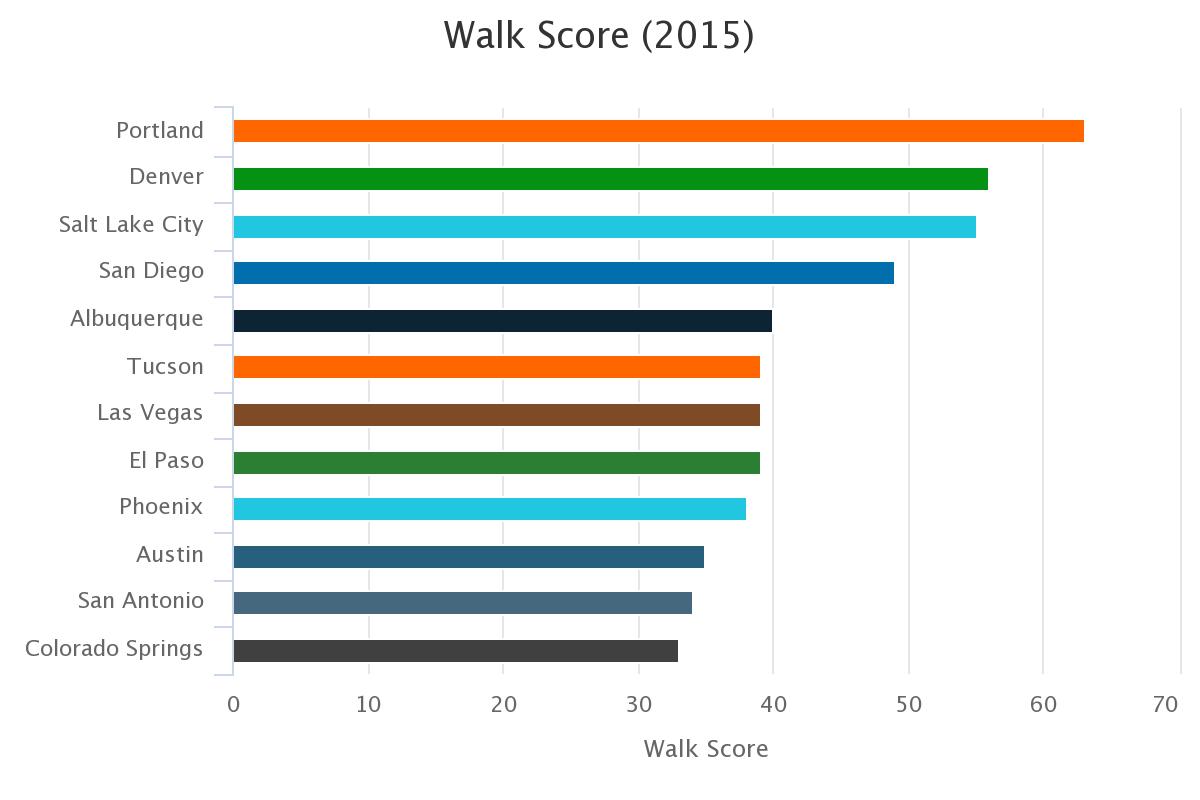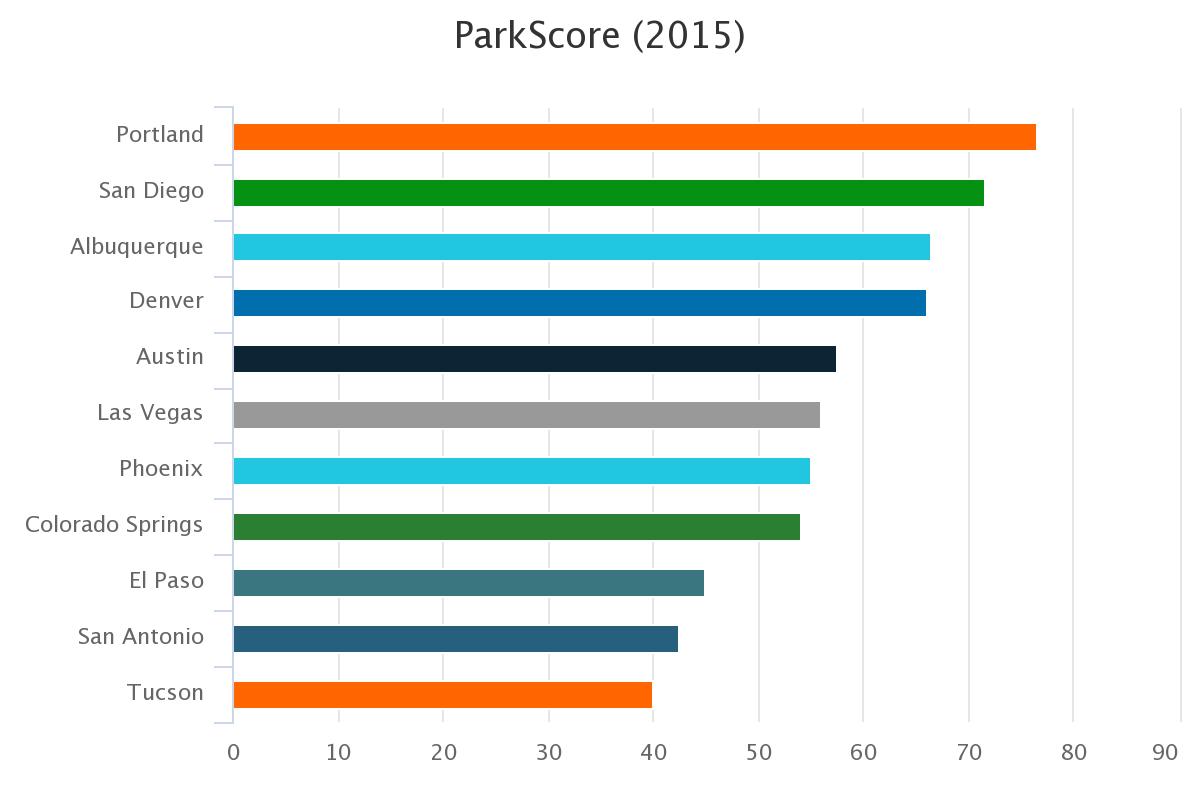Quality parks, recreation facilities, and infrastructure that supports walking contribute to our quality of life. Parks and recreation facilities have been shown to provide health benefits for a community and increased property values. Improvements to sidewalks also provide health benefits as well as increased access to public transportation and surrounding businesses.
Have you ever wondered how walkable the Tucson urban area is compared to other regions around the western U.S.? Or how accessible parks are in Tucson relative to our peers? Well, we have two answers for you, based on the analyses of Walk Score and ParkScore. Our walkability is in the middle of the pack and our park accessibility ranks the lowest among our peer urban areas. Keep in mind that the urban area accounts for only part of Pima County. To view the Walk Score map for the Tucson urban area click here (https://www.walkscore.com/AZ/Tucson). A map of the area included in Tucson’s ParkScore can be found here (http://parkscore.tpl.org/map.php?city=Tucson).
First let’s take a closer look at the walkability score. The Tucson urban area is considered a car-dependent city by Walk Score, i.e. most errands require a vehicle. Tucson ranked sixth, in the middle of the pack, when compared to 11 peer urban areas in the west. Three of the urban areas were considered somewhat walkable by Walk Score, including Portland, which ranked first. Denver and Salt Lake City were the other two somewhat walkable areas. Colorado Springs placed last in walkability and is considered a car-dependent city.

The Walk Score index includes data on the proximity to parks, among other amenities, but the ParkScore data allows us to focus just on parks. The Tucson urban area moved from sixth place in walkability to last in access to parks. Tucson’s score indicates that the urban area’s park system needs improvement. Portland remained in first place and according to ParkScore has an outstanding park system. One other notable change when examining just the park data, is that Colorado Springs moved up several spots from last. ParkScore did not include data on Salt Lake City.

Walk Score measures the walkability of an area by using a point based system that calculates the distance to select amenities. Points are awarded as follows: if the amenity is within .25 miles (5 minute walk) the maximum number of points are given, as the distance increases the number of points decline, with no points given after a 30 minute walk. Network distance is used is the estimation of walking time to each amenity, which means that an actual route is used, not straight line distance. Relevant amenities are broken down into several categories: dining and drinking, groceries, shopping, errands, parks, schools, and culture and entertainment. Dining and drinking amenities include but are not limited to restaurants, bars, cafes, and coffee shops. Errands include items such as pharmacies, post offices, and banks. Shopping may include clothing stores, book stores, music stores, and gift shops. The culture and entertainment category may include theaters, museums, and libraries.
ParkScore evaluates access to parks through the consideration of land owned by regional, state, and federal agencies, including school playgrounds open to the public and greenways that function as parks. ParkScore assigns points based on three criteria: acreage, facilities and investment, and access. Acreage includes two equally weighted measures: median park size and park acres as a percentage of the city area. Within facilities and investment points are also awarded based on two equally weighted measures: total spending per resident and an average of per-capita provision of four key facilities (basketball hoops, dog parks, playgrounds, and recreation and senior centers). The last criteria, access, is based on the percentage of the population living within a ten-minute (half-mile) walk of a public park. The half-mile distance is defined as entirely within the public road network and uninterrupted by physical barriers.
To learn more about Walk Score visit their methodology page at: https://www.walkscore.com/methodology.shtml
To view the ParkScore for other regions visit their webpage at: https://www.tpl.org/parkscore












